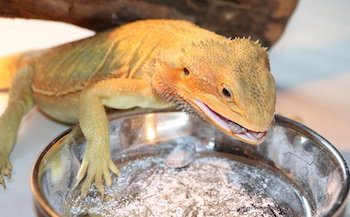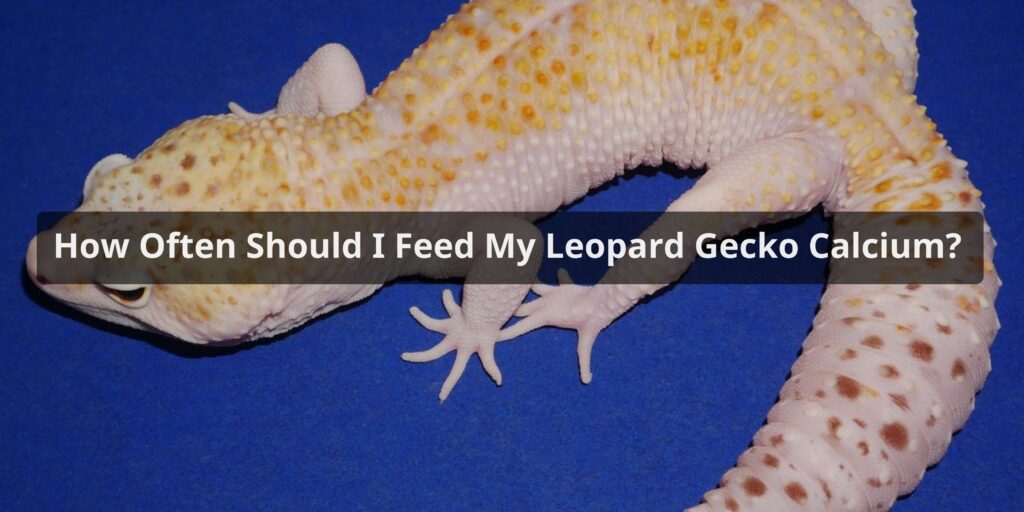Calcium is an essential nutrient for Leopard Geckos to maintain strong bones and prevent metabolic bone disease. Determining how often to feed calcium supplements is important to ensure your leopard gecko gets enough without overdosing. Here is a guide on the recommended calcium feeding frequency for leopard geckos.
Calcium is critical for many body functions in leopard geckos. It helps regulate nerve and muscle function, aids in blood clotting, and provides structural integrity to their bones. Leopard geckos, like other reptiles, require high levels of calcium in their diet as they cannot produce their own vitamin D3 needed to properly metabolize and absorb calcium. Without adequate calcium, they are at risk for developing metabolic bone disease which can cause deformities, weakness, seizures, and even death. Feeding proper calcium supplements is essential but it’s also important not to overdo it. Finding the right balance is key to your leopard gecko’s health.
How Often Should I Feed My Leopard Gecko Calcium ?

The general recommendation from leopard gecko experts is to feed calcium supplements 2-3 times per week for adult leopard geckos. This frequency helps ensure they get sufficient calcium without leading to toxicity issues from excessive calcium intake.
Calcium Schedule for Adults
- 2-3 times per week: Dust insects with calcium powder this often. This maintains healthy calcium levels.
- 1-2 times per month: Use calcium with vitamin D3 this often. D3 helps with calcium absorption.
- Avoid back-to-back days: Give their body time to process calcium before dusting again.
Calcium Schedule for Juveniles Growing Leopard Geckos
- 3-5 times per week: Dust insects more frequently for juveniles. Their growing bones need more calcium.
- 2 times per month: Dust with calcium + D3 supplement for better utilization.
- Every other feeding: Avoid dusting at every feeding which can be excessive.
The main signs of calcium deficiency include weak limbs or jaws, seizures, and boneless, rubbery legs. If you notice these, increase calcium frequency. Otherwise, stick to the schedule above to prevent oversupplementation.
How to Supplement with Calcium
Supplementing with calcium is quite easy. Here are some tips:
- Use calcium powder: Choose plain calcium carbonate powder without added phosphorus.
- Lightly coat feeder insects: Shake insects in a plastic bag with calcium powder until lightly coated. Excess will be wasted when insects groom themselves.
- Feed appropriate insects: Crickets, roaches, mealworms, silkworms, and calciworms are all good feeders to dust. Avoid waxworms which are high in fat.
- Avoid vitamin overdoses: Use a multidose vitamin sparingly as vitamins A and D are fat soluble and can build up to toxic levels in their fat stores.
- Provide in a small dish: Also provide a small dish of pure calcium powder in the terrarium at all times for leopard geckos to lick up as needed.
Signs of Calcium Deficiency
Watch for these signs of possible metabolic bone disease from calcium deficiency:
- Weakness, limping, or rubbery legs
- Difficulty walking or holding up body
- Twitching, tremors, or seizures
- Bent limbs or spine (hypocalcaemia)
- Egg binding or weak eggshells
- Irregular skeletal growth in juveniles
Address any symptoms quickly by increasing calcium powder frequency, provide calcium dish, and get vet advice. MBD can have permanent effects if not corrected.
Conclusion
Getting the right amount of calcium for leopard geckos is vital for lifelong bone health. By following the supplement schedule recommendations, providing a calcium dish, and choosing suitable calcium products, you can easily meet your leopard gecko’s calcium needs. Monitor for deficiency signs but avoid oversupplementing. With the proper calcium intake, your leopard gecko will thrive for years to come.
FAQs
What’s the recommended frequency for gut-loading insects with calcium?
The recommended frequency for gut-loading insects with calcium is about 24 to 48 hours before feeding them to your leopard gecko. This ensures that the insects are enriched with calcium, which is vital for your gecko’s health and bone strength.
Are there specific calcium supplements designed for leopard geckos?
Yes, there are specific calcium supplements formulated for leopard geckos. Look for calcium supplements that do not contain phosphorus and contain vitamin D3. These supplements are designed to meet the specific dietary needs of leopard geckos.
Can I meet my gecko’s calcium needs through its diet alone?
In most cases, it’s challenging to meet your gecko’s calcium needs solely through its diet. While a varied diet of insects and gut-loaded prey helps, providing a calcium supplement is essential to ensure your gecko receives an adequate calcium intake, which is crucial for their bone health.
Do different types of calcium supplements have varying dosages?
Yes, different types of calcium supplements may have varying dosages. Some calcium supplements contain vitamin D3, while others do not. The dosage and frequency of supplementation may differ based on the product’s formulation. Always follow the specific instructions on the supplement label or consult a veterinarian for guidance.
How do I determine the appropriate calcium schedule for my gecko’s age?
The appropriate calcium schedule for your gecko’s age can vary. Generally, young growing geckos may require more frequent calcium supplementation, up to four to five times a week. Adult geckos may need it less often, around two to three times a week. Tailoring the schedule to your gecko’s age and health is essential, and consulting a reptile veterinarian can provide personalized guidance.



